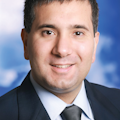The Evolution and Maturation of Safety Management Systems in Ground Handling Operations
The aircraft ground handling industry has undergone a transformative shift in recent years, driven by a growing emphasis on structured, data-driven safety frameworks. Safety Management Systems (SMS), once fragmented and largely dependent on airline-specific manuals, are now maturing into integrated, globally aligned structures across providers.
In this analysis we explore the current state, challenges, and future direction of SMS in the ground handling sector, drawing insights from industry players.
SMS development
Over the past five years, SMS has become significantly more mature and widespread in ground handling, according to David Clark, head of quality, health, safety, and environment at Swissport.
“Previously, many ground handling providers operated according to airline-specific manuals. Today, the industry has adopted more unified and proactive safety frameworks, with companies like Swissport developing their own robust systems, aligned with international best practices.
“Swissport is globally certified to ISO 45001 (occupational health and safety management system), demonstrating our commitment to high safety standards. The move to standardised SMS practices is part of a broader push for consistency, accountability and efficiency across the aviation industry."
David Storey, vice president of health, safety, and environment at dnata emphasizes that the environment surrounding ground handling and SMS is constantly evolving.
“Regulatory bodies such as EASA are aiming to make SMS mandatory and standardized across Europe, and ISAGO certification is becoming a key requirement for operating at several airports and airlines," he says. “Safety data systems are also constantly improving, simplifying data processing and providing greater understanding. Ground handling service providers (GHSP) are therefore exploiting the benefits that SMS offers, not only in terms of safety or corporate culture, but also in terms of operational and process efficiency."
The ground handling industry is undergoing a profound transformation driven by increasing digitalization, with providers moving from manual paper-based systems to digital platforms for hazard reporting, risk assessment and safety audits, according to Graham, vice president of safety standards at Menzies.
“Real-time mobile apps and dashboards now enable frontline staff to report incidents instantly, improving safety data collection and responsiveness," he says. “At the same time, organizations are adopting risk-based oversight and predictive safety practices, using data and analytics to anticipate and prevent incidents. This shift is supported by a growing emphasis on safety culture, including principles of equitable culture, employee accountability and continuous improvement. Additionally, there is increased integration between airline, airport and ground handler SMSs, promoting seamless safety communication between stakeholders."
Implementation challenges
Challenges, however, remain, particularly in addressing different regulatory environments and procedural inconsistencies, as not all airlines follow common standards such as IATA’s IGOM, according to Clark.
“Nonetheless, there are significant opportunities in adopting digital tools to improve safety performance. Swissport, for example, has implemented an AI-based vehicle monitoring system and platforms such as Ideagen’s safety management software to enable real-time reporting, proactive risk identification and continuous improvement," he says.
The ground handling industry faces several difficulties in implementing an effective SMS, according to Cowing.
“Cultural resistance is a major obstacle, as frontline staff may fear reprimand or discipline, discouraging open reporting. Lack of standardization also complicates efforts, with different contractors, airlines, and third-party providers each using different safety processes.
"Unlike flight operations, ground handling does not have universally applied SMS regulatory frameworks, although organizations such as the International Civil Aviation Organization (ICAO) and the International Air Transport Association (IATA) are filling this gap," he says.
“Training and awareness raise additional challenges, particularly due to high staff turnover and varying levels of experience or training. Additionally, many operations still rely on manual or fragmented data systems, limiting the effectiveness of hazard identification and analysis and making integration with current operational tools complex and costly."
Integrated management systems
Clark points out that SMS enables a structured approach to identifying and mitigating safety risks, with measurable benefits.
“At Swissport, incidents are thoroughly investigated to identify root causes and information is shared globally. We support this process with initiatives such as safety briefings, employee engagement through Safety Ambassadors and systematic communication across all levels of the organization. Swissport’s global certifications for ISO 9001 (quality management system - QMS) and ISO 14001 (environmental management system - EMS) are based on the principle of an integrated management system, rather than separate standards, allowing us to seamlessly integrate SMS with other critical systems," he says.
“This integrated approach ensures that our safety, quality and environmental practices are not siloed, but work together to support operational excellence. It also provides a robust governance framework that improves compliance, reduces risk and promotes a culture of continuous improvement."
Measurable improvements in safety outcomes are achieved by shifting the organization’s focus to identifying, mitigating, and monitoring risks and incidents in day-to-day operations, according to Storey.
“This is monitored through the application of safety performance metrics that the organization can track through leading and lagging indicators. The SMS formalizes the role and responsibilities of each employee and defines expectations, from senior management to the factory floor operator, to ensure a safer operation," he says.
“SMS, QMS, and EMS follow very similar methodologies, as they share common structures based on ISO requirements. Integration should be applicable, while eliminating duplication of effort and processes."
The integration of SMS with other management systems, such as Quality and Environment, is possible thanks to the shared structure of ISO management system standards, according to Cowing.
“These standards, which cover areas such as organizational context, leadership, planning, support, operations and performance evaluation, provide a common framework. This alignment enables the integration of policies, procedures, documentation and a unified approach to risk management across all aspects of safety, quality and environment," he says.
“By using this shared structure, organisations can streamline processes, improve communication and ensure that all management systems work efficiently together to achieve common goals."
Measurable improvements
Cowing affirms that hazard identification and risk management, data collection and trend analysis lead to better identification of underlying causes and targeted interventions.
“The SMS includes regular audits, performance monitoring and key performance indicators (KPI). This ensures the effectiveness and continuous improvement of safety measures. A focus on safety training and communication, supported by the promotion of a safety culture, leads to greater awareness and improved behaviour from teams. This is evident at Menzies through our MORSE (Menzies Operating Responsibly, Safely, Effectively) code and charter, along with our Golden Rules," he says.
“This document encapsulates our safety culture and how we embed it in everything we do. This is supported by our reporting ethos and initiatives such as Spot, Stop and Prevent. These key initiatives contributed to a 49% increase in hazard reports in 2024. This was significantly contributed by our SWIFT reporting app which uses QR codes to simplify real-time image reporting for all colleagues."
Another key area Menzies is currently focusing on is management engagement and accountability. SMS integrate safety into organisational decision-making, with clear roles, responsibilities and reporting at all levels, according to Cowing.
“We find that greater executive oversight often correlates with lower incident rates and improved compliance with safety standards. Several key metrics are used to measure the impact of SMS. A decrease in total recordable incident rate (TRIR) and lost time injury frequency rate (LTIFR) indicates fewer workplace injuries," he says.
“An increase in the number and quality of hazard reports indicates proactive identification of risks, while a reduction in incident severity reflects improved safety controls. Finally, improvements in audit scores and compliance levels demonstrate greater adherence to safety protocols and regulations."
Looking ahead
Clark observes that although SMS has been widely adopted, full standardization in the ground handling industry is still a work in progress.
“One of the key challenges is the inconsistent implementation of shared guidelines such as IGOM and ISAGO, which can lead to procedural confusion for frontline teams serving multiple airlines. To address these gaps, upcoming updates, such as the 2025 edition of the ISAGO and IGOM Standard Manual, are expected to further align safety practices and enhance industry-wide consistency," he says.
“Another key challenge is adapting to new SMS regulatory requirements, with the risk of individual states creating conflicting requirements: It is essential that individual states, with the support of ICAO and IATA, proceed harmoniously on this important ground handling regulatory journey, so that international ground handling service providers can continue to provide standardized, world-class SMS globally, without introducing unnecessary complexity and confusion. Swissport’s global footprint and unified systems position us well to adapt effectively across diverse regulatory landscapes, ensuring consistent safety performance worldwide."
SMS regulatory frameworks vary significantly across sectors, making cross-sector learning and collaboration difficult, according to Cowing.
“Inconsistent regulatory requirements contribute to this gap, as some regions (e.g., the EU, the US, and Canada) have robust SMS legislation, while others rely on voluntary adoption or lack enforcement mechanisms altogether. This lack of a universally accepted regulatory framework leads to different interpretations and implementations of SMS principles.
"Furthermore, audits often focus on compliance, for example using checklists, rather than assessing the effectiveness of the system or the broader safety culture," he says. “Another issue is that SMS are often siloed and not fully integrated with other management systems, such as QMS, EMS or enterprise risk management (ERM), resulting in duplication of effort or overlooked risks.
"However, it is worth noting that regulators, particularly in the ground handling industry, are starting to address these gaps. The introduction of the new EASA ground handling regulations is expected to improve standards and promote greater consistency within the industry."
According to Storey, the next big step in the evolution of SMS is the integration of AI and predictive analytics into day-to-day safety management.
“By automating hazard identification and integrating incident management, risk assessments can become real-time, enabling more accurate and dynamic responses, thus enabling the shift from reactive to proactive safety management. Predictive analytics, when integrated, by integrating different data sources, can further improve AI modeling and reduce the likelihood and severity of incidents through proactive monitoring and intervention," he says.
Summing up
As SMS continues to mature, it is clear that a unified, proactive approach to safety is becoming central to ground handling operations. Despite challenges such as regulatory inconsistency, cultural resistance, and fragmented adoption, the industry’s trajectory remains strongly positive. Leading ground handlers are leveraging integrated management systems, AI-driven reporting, and workforce engagement to embed safety into every layer of their operations. Moving forward, harmonized global standards and sustained regulatory support will be critical in ensuring SMS achieves its full potential.
About the Author

Mario Pierobon
Dr. Mario Pierobon provides solutions in the areas of documentation, training and consulting to organizations operating in safety-sensitive industries. He has conducted a doctoral research project investigating aircraft ground handling safety. He may be reached at [email protected].
